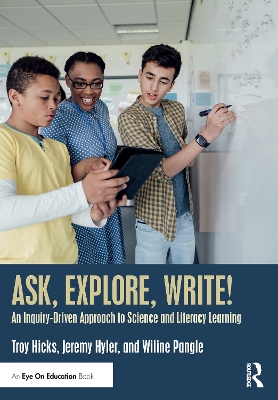Discover how to effectively incorporate literacy instruction into your middle or high school science classroom with this practical book. You’ll find creative, inquiry-based tools to show you what it means to teach science with and through writing, and strategies to help your students become young scientists who can use reading and writing to better understand their world.
Troy Hicks, Jeremy Hyler, and Wiline Pangle share helpful examples of lessons and samples of students’ work, as well as innovative strategies you can use to improve students’ abilities to read and write various types of scientific nonfiction, including argument essays, informational pieces, infographics, and more. As all three authors come to the work of science and literacy from different perspectives and backgrounds, the book offers unique and wide-ranging experiences that will inspire you and offer you insights into many aspects of the classroom, including when, why, and how reading and writing can work in the science lesson.
Featured topics include:
- Debates and the current conversation around science writing in the classroom and society.
- How to integrate science notebooks into teaching.
- Improving nonfiction writing by expanding disciplinary vocabulary and crafting scientific arguments.
- Incorporating visual explanations and infographics.
- Encouraging collaboration through whiteboard modeling.
- Professional development in science and writing.
The strategies are all aligned to the Next Generation Science Standards and Common Core State Standards for ease of implementation.
From science teachers to curriculum directors and instructional supervisors, this book is essential for anyone wanting to improve interdisciplinary literacy in their school.
- ISBN13 9781000025651
- Publish Date 12 February 2020
- Publish Status Active
- Publish Country GB
- Publisher Taylor & Francis Ltd
- Imprint Routledge
- Format eBook (EPUB)
- Pages 154
- Language English
